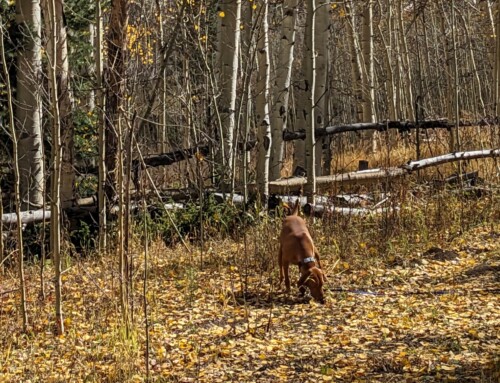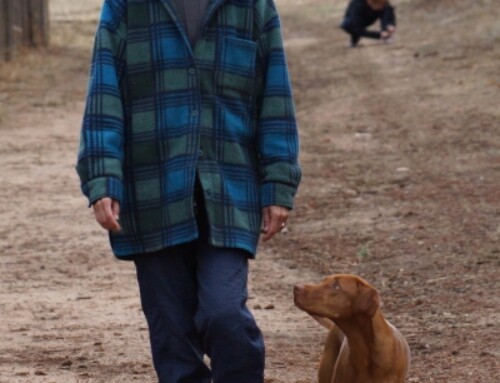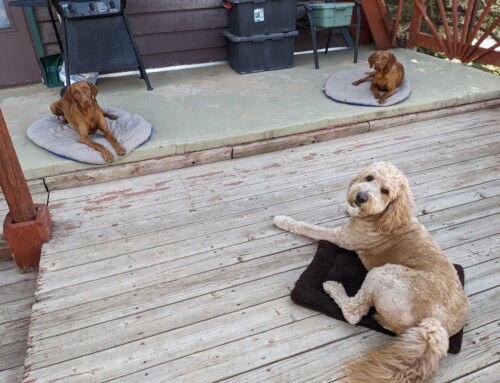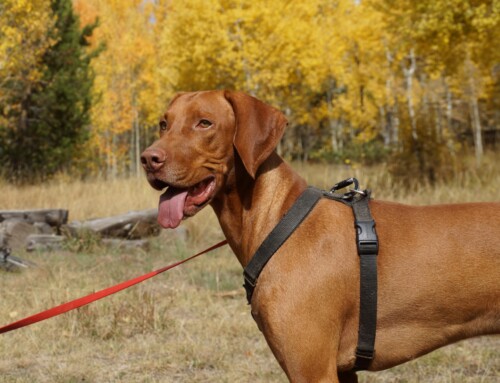DOG TRAINING OFFERED IN-PERSON AND ONLINEOur dog training services are delivered in almost any format that meets your needs. We have GROUP CLASSES at our indoor and outdoor facilities on our farm, ONLINE LIVE STREAMING classes, and SELF-PACED VIDEO-BASED training through our Online Dog Training Course. Our PRIVATE TRAININGS can be done in-home, outside, in public dog-friendly locations, at our facility on our farm, online via phone or video conferencing and through email. |
When most people train their dogs, they expect their dogs to respond to verbal cues, hand signals or both. However, there are times when an automatic or default behavior is better. What is an automatic or default behavior? This is a behavior the dog is expected to perform in certain situations without a verbal cue or hand signal. The dog automatically does it, or does it by default.
One example with my Vizsla Romeo is sitting and focusing on me before we head out for a walk. There are others, but the point here is that these are routine situations in which I expect him to know what to do without me telling him. And he does.
One of my clients lives in an assisted living facility with her very nice, mostly well-behaved dog. She walks pretty well but needs better leash manners so she does not knock over her owner – especially when it’s icy outside. She also needs to get more comfortable with men approaching her. Sometimes she does fine, other times she reacts defensively if she thinks they are coming for her. Her biggest issue, though, is with other dogs. She gets highly excited and out-of-control. There are a few other dogs living in the facility and also dogs who visit tenants. This dog needs to learn how to handle these situations or she faces being evicted from the facility.
Many of you have probably dealt with similar issues. However, in this case, the dog’s owner is not able to remember what cues to use or how to work with the dog. A previous trainer did a board-and-train with the dog and then tried to translate what she’d learned upon returning the dog to the facility. Unfortunately, the owner doesn’t remember any of this, and usually doesn’t remember what we worked on a few days earlier. Normally, my job is to teach owners how to most effectively work with their dogs. In this case, my job is to teach the dog to respond automatically in certain situations so that the owner doesn’t have to remember anything.
This dog is being taught to sit and focus whenever the person holding the leash stops. This dog is learning that whenever she pulls on leash, we stop moving forward until she loosens the leash and checks back in. This dog is learning good things happen when people approach so there is no need to fear anyone reaching out, especially men. This dog is learning to be calm when other dogs pass by.
I am working with the dog myself for now. The goal is to get her responding with her default behaviors so that she will perform all of these behaviors with her owner during the same circumstances without the need for any cues. It takes practice, but it will be worth it so that these two can continue to enjoy each others company.
I discuss default behaviors in more detail in my book, Juvenile Delinquent Dogs: The Complete Guide to Saving Your Sanity and Successfully Living With Your Adolescent Dog.
Our goal is to positively impact the lives of as many dogs and their families as we can, in part through our extensive library of video, infographics and text articles. 
|












